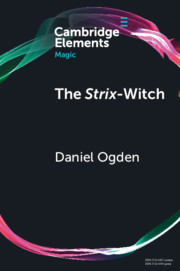Element contents
The Strix-Witch
Published online by Cambridge University Press: 13 May 2021
Summary
Keywords
- Type
- Element
- Information
- Series: Elements in MagicOnline ISBN: 9781108953474Publisher: Cambridge University PressPrint publication: 10 June 2021

